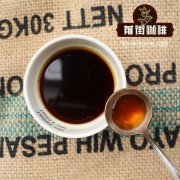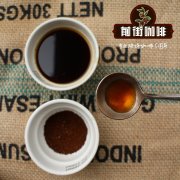What are the flavor characteristics and taste of cabin manor coffee in Vera, Colombia?

Professional coffee knowledge exchange more coffee bean information please follow the coffee workshop (Wechat official account cafe_style)
What are the flavor characteristics and taste of cabin manor coffee in Vera, Colombia?
Raw bean narration:
As one of the best coffee producing areas in Colombia, Vera has excellent geographical and climatic conditions, and clouds cover this area for most of the year, which allows coffee trees to grow without worry. In addition, growing in the volcanic zone, the soil is very fertile, so that the coffee beans harvested are of good quality, uniform taste and high sweetness. The owner of the cabin manor has more than 40 years of coffee growing experience and uses the primeval forest springs of the Andes to irrigate the coffee trees to present the best coffee to the customers.
Origin: Vera province, Colombia
Manor: cabin manor
Variety: Kaddura
Treatment: high-quality water washing
Flavor: Jasmine, sweet chocolate and caramel, moderate acidity and mellow, high sweetness
Producing area: Vera. St. Augustine
Producer: Shangri-La Manor
Altitude: 1880m
Variety: Caturra & Bourbon
Treatment: washing / slow drying
Flavor description: sweet roasted nut aroma, toffee, thick greasy, round acidity, rich and full taste.
This bean comes from a small batch of Shangri-La Manor in the Vera / St. Augustine region. The fully ripe coffee cherries are picked manually, soaked and fermented for 12 to 16 hours, then washed and removed by specific gravity. In the dry part, peeled and shelled beans are placed in the "parabolic drying bed" (similar to greenhouse), which has been widely used in Colombia in recent years, for slow sun drying. This method is bound to increase the drying schedule, but it can indeed reduce the interference of dew (or Rain Water) or other external environment, develop a more consistent flavor, and improve the stability of raw bean quality.
Important Notice :
前街咖啡 FrontStreet Coffee has moved to new addredd:
FrontStreet Coffee Address: 315,Donghua East Road,GuangZhou
Tel:020 38364473
- Prev

Guatemala Finca La Esperanza Hope Manor Coffee Story the first C.O.E winning Manor
Professional coffee knowledge exchange more coffee bean information please follow Coffee Workshop (Wechat official account cafe_style) Guatemala Vivetnango Hope Manor (Finca La Esperanza) was founded by Heleodoro de Jesus Villatoro Lopez in 1953 in Vivette Nanguo, northeast of Guatemala. With the love of coffee and the failure of the family
- Next

Guatemala Coffee Bourbon bourbon Manor Story Ultra High altitude OCIA Organic Certified Coffee
For more information on coffee beans, please follow the Coffee Workshop (Wechat official account cafe_style). This estate is located in a very special area of Patzun in Chimaltenango province. This area is located between the two major coffee producing areas of Acatenango and Atitlan, but its annual output is rare, so it is not listed as a separate.
Related
- Detailed explanation of Jadeite planting Land in Panamanian Jadeite Manor introduction to the grading system of Jadeite competitive bidding, Red bid, Green bid and Rose Summer
- Story of Coffee planting in Brenka region of Costa Rica Stonehenge Manor anaerobic heavy honey treatment of flavor mouth
- What's on the barrel of Blue Mountain Coffee beans?
- Can American coffee also pull flowers? How to use hot American style to pull out a good-looking pattern?
- Can you make a cold extract with coffee beans? What is the right proportion for cold-extracted coffee formula?
- Indonesian PWN Gold Mandrine Coffee Origin Features Flavor How to Chong? Mandolin coffee is American.
- A brief introduction to the flavor characteristics of Brazilian yellow bourbon coffee beans
- What is the effect of different water quality on the flavor of cold-extracted coffee? What kind of water is best for brewing coffee?
- Why do you think of Rose Summer whenever you mention Panamanian coffee?
- Introduction to the characteristics of authentic blue mountain coffee bean producing areas? What is the CIB Coffee Authority in Jamaica?

